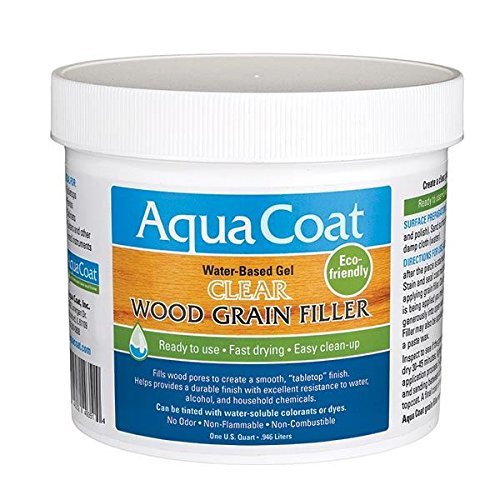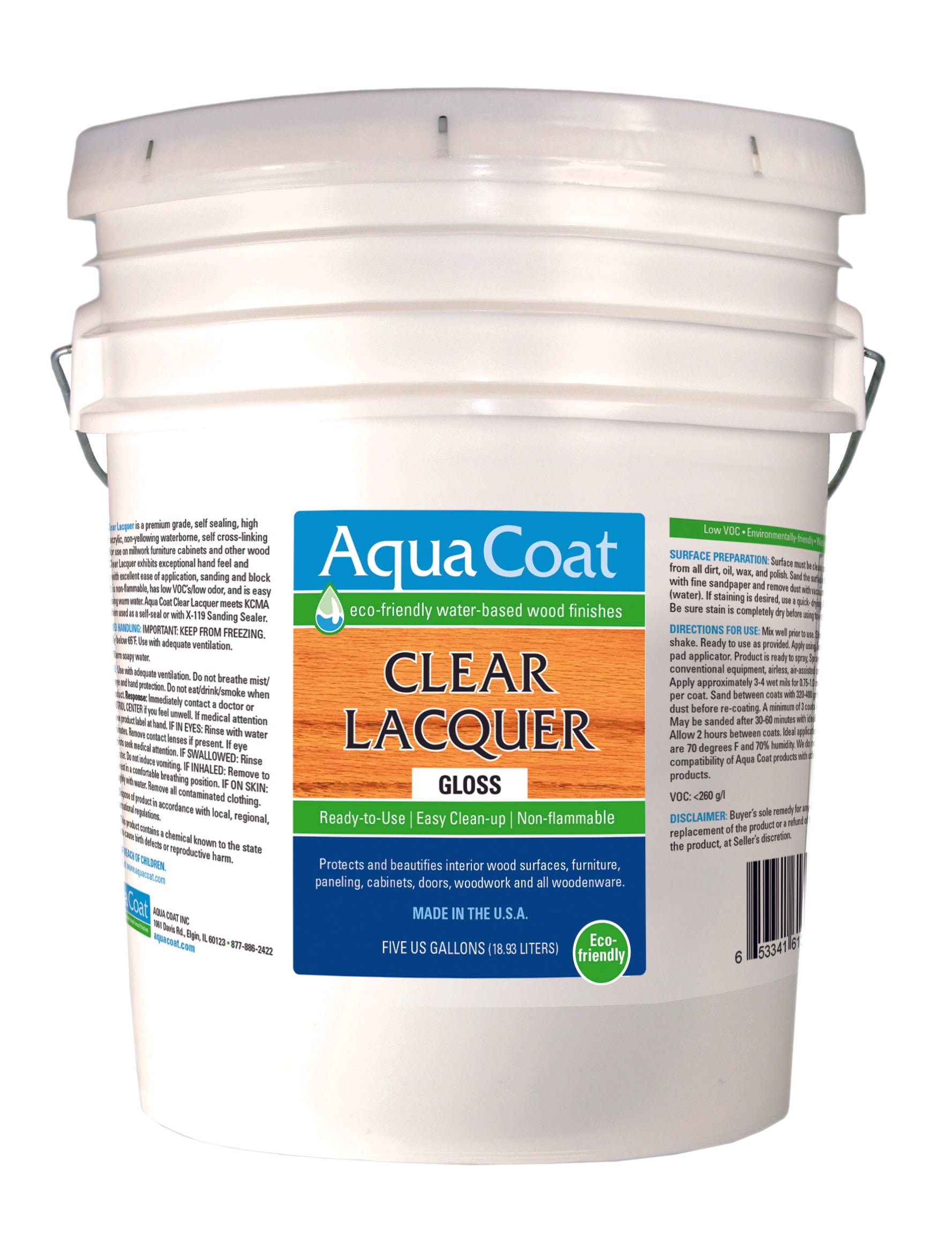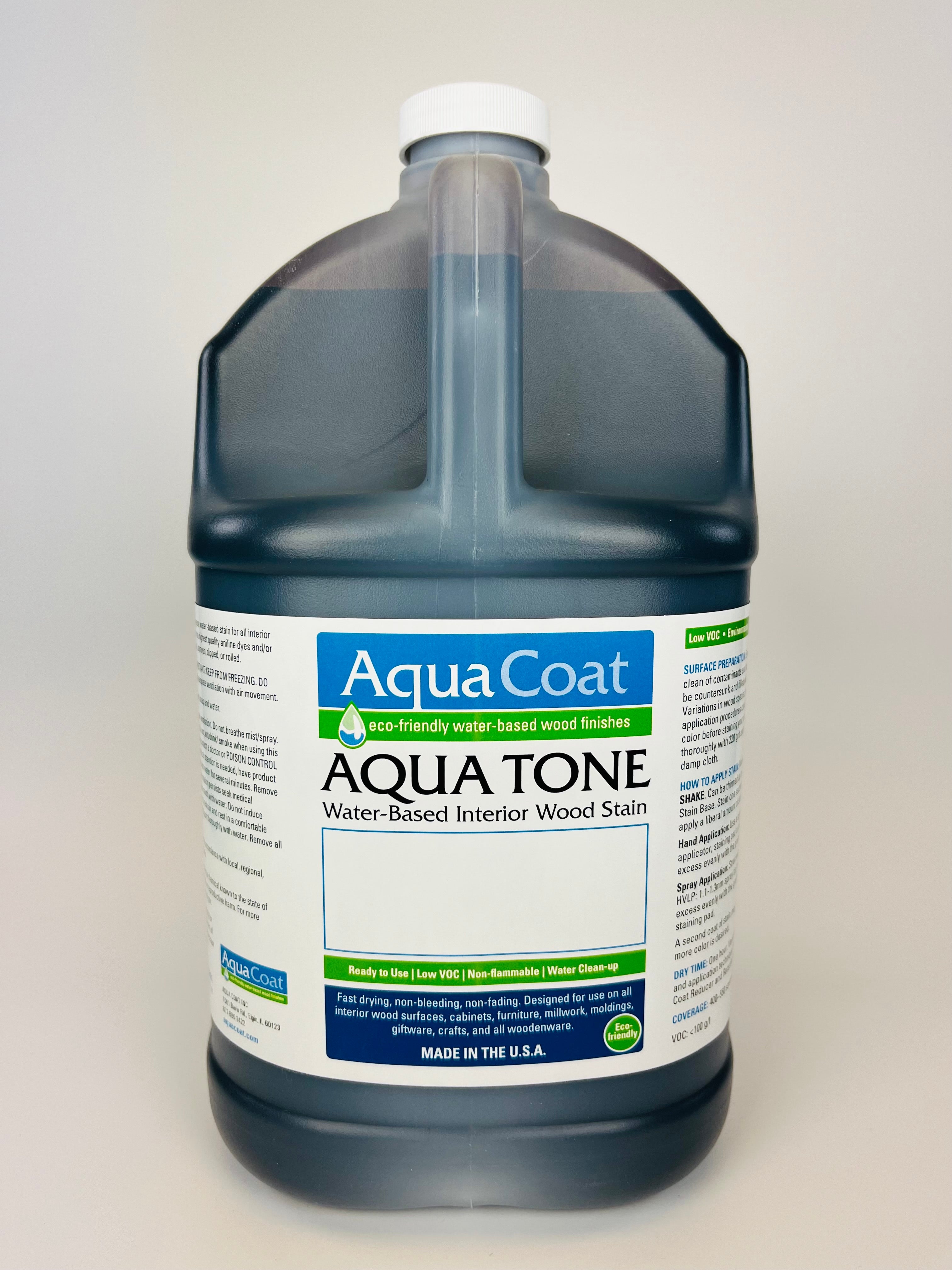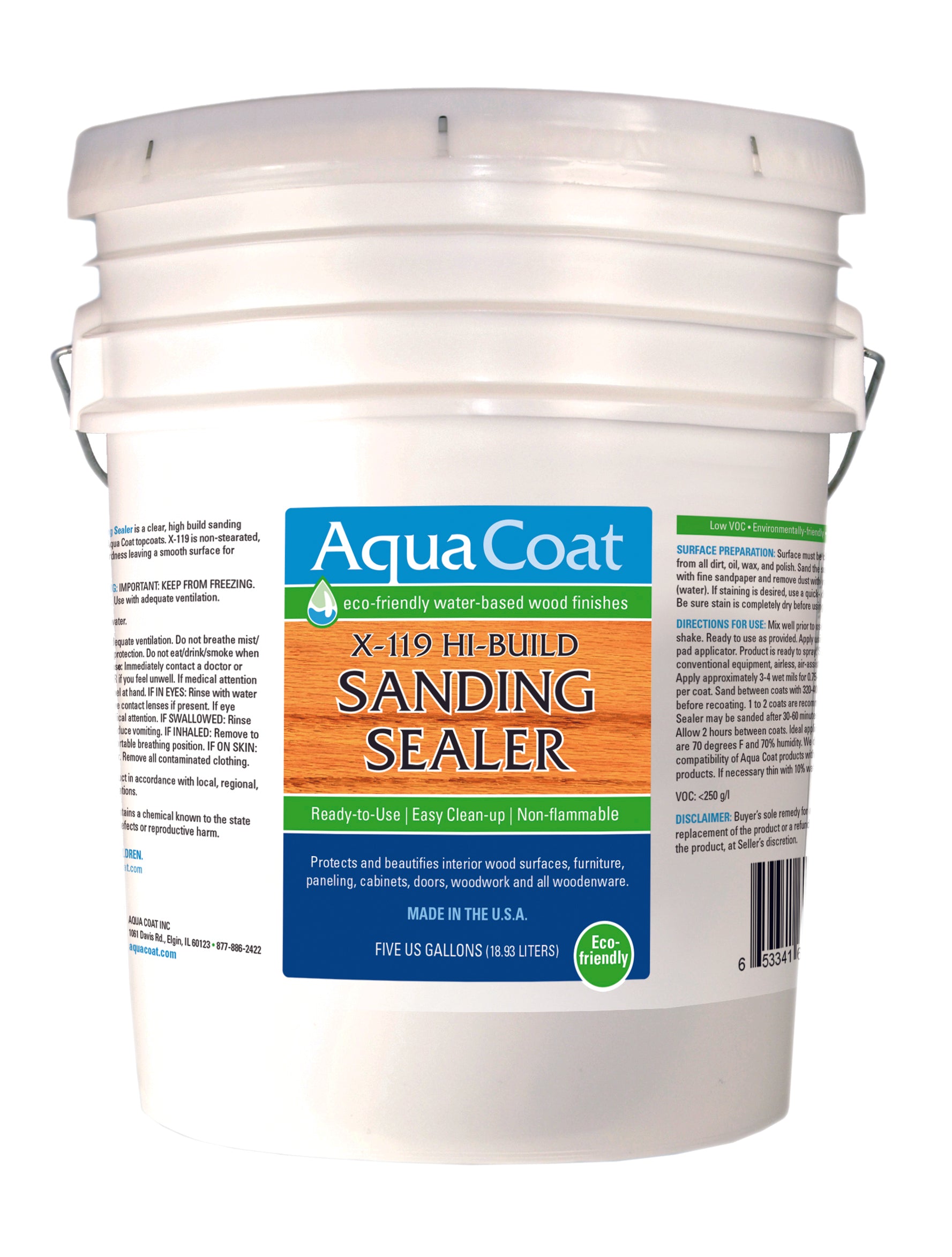General Questions
If you are trying to acquire a smooth finished cabinet without any grain showing. After being painted you need to seal and fill the pores and grains to accomplish this. If you don’t, the cabinet will continue to absorb the primer and paint. This really helps when refinishing older oak stained cabinets, bathroom vanities or even doors.
Wood putty and joint compound are clay-based products. Clay based products, over time, dry hard and brittle so they can crack with the expanding and contrasting of the wood cabinet. They also create a large amount of dust. The White Cabinet Grain Filler is acrylic based like paint and will be able to absorb more of the expanding and contracting of the wood.
You can brush or spray any oil- or water-based stain blocking primer, paint or lacquer over Aqua Coat White Cabinet Grain Filler.
Yes, you can apply the grain filler as long as the previous coat is cured per the manufacturer of the paint or lacquer. Scuff sand with 220 grit sandpaper. You can then apply 1-2 coasts of the grain filler as instructed and prime and paint once again.
We recommend 1 quart for a kitchen with up to 35 doors and drawers using two coats. This product has a shelf life greater than one year.
If a customer wants their older cabinets painted without grain showing, a contractor can ONLY obtain 80-90% removal of grain without filling it with a grain filler. If you want to obtain a look without grain showing, a grain filler should be used. When using grainfilleryou are offering a premium service to customers. From our discussions with contractors, we have found they have added a 30% premium to start with when applying the grain filler for their customer, and adjusted it as needed. Customers usually prefer no grain showing so a grain filler is required to obtain that.
Yes it does. Ideally you want it to be between 60-85 degrees. You do not want it to be too humid or dry. Each of these will affect the performance of the grain filler and the dry and cure time.
Give your cabinet 45 minutes to an hour to completely dry before applying your next coat of grain filler. For optimal performance, after you have applied your final coat of grain filler, and before you sand and apply your primer, we recommend you let it set/dry overnight. After it has set overnight, then you can sand it and apply your primer.
Yes, with water soluble trans tints and dyes. You would want to tint the filler to use as a decorative finish on products. We recommend you take these water soluble trans tints and dissolve them in extremely hot water first. Take a sub container with a small amount of hot water and add the dye and stir it. Then add grain filler until you receive the concentration you want.
Aqua Coat Clear Grain Filler is used on surfaces that you plan on putting clear coats as their topcoats. It is extremely clear and will help you attain a glass smooth finish with less coats of a topcoat. Aqua Coat White Cabinet Grain Filler is used when painting wood surfaces. It was developed so customers can see where they applied it. It has a better adhesion and higher solids/build and will perform better in less coats.
They both are easy to use, water based, non-flammable, low odor, low VOC, easy to apply, easy sanding, fast drying and watercleanup. The High Performance has alittle higher solidsand build and will perform better than the clear in less coats. Just make sure though if you are painting, use the white grain filler.
In general, you will be sanding the surface, cleaning it, adding a stain base, and sanding again. For details on this phase and an overall process, read our Expert Wood Finishing Tips.
Mix well prior to use. DO NOT shake. Straining is recommended before spray application. Can be thinned up to 50% with Aqua Tone Clear Stain Base if desired.
Apply using preferred method, dip or spray evenly. Wipe off excess. One coat is usually enough for most applications. A second coat of stain may be applied within 30 minutes if more color is desired which will increase color depth and grain definition. Allow one hour before top coating with Aqua Coat finish. Drying time is about 45-60 minutes, though it will vary with temperature humidity and porosity of wood. Coverage is 450 to 600 square feet per gallon unreduced, approximately.
NOTE: If one container of stain will not be enough to finish the entire piece, mix stain from second container with some of the first to ensure consistent stain tone.
A typical finish will require one to three coats of Sanding Sealer X-119, followed by one or two coats of any one of Aqua Coats Water-Based Clear Topcoats. Due to the high solids content in the sealer, it will build as quickly as the topcoats.
Before spraying sanding sealer, stir and strain. The first application of sanding sealer should be applied as a very light dust coat. Allow 10 minutes dry time. Then spray another coat building to 1 to 1.5 mil thickness. This coat should have an evenly wet and glossy appearance.
Because of the high solids and water content, Aqua Coat Water-Based Sanding Sealer X-119 is heavier and flows more slowly than solvent-based products. Even though it may appear that more finish should be sprayed, DON'T. Spraying more finish will result in a milky layer that will dry slowly and be the equivalent of four or more coats of lacquer. Allow the wet coat to dry 30-60 minutes. Sand lightly, remove dust by blowing or with a damp cloth.
White Cabinet Grain Filler
Many projects need Aqua Coat White Cabinet Grain Filler to ensure a smooth and professional finish to wood projects and material.
Wood putty and joint compound are clay-based products. Clay based products, over time, dry hard and brittle so they can crack with the expanding and contrasting of the wood cabinet. They also create a large amount of dust. The White Cabinet Grain Filler is acrylic based like paint and will be able to absorb more of the expanding and contracting of the wood.
You can brush or spray any oil- or water-based stain blocking primer, paint or lacquer over Aqua Coat White Cabinet Grain Filler.
If you are trying to acquire a smooth finished cabinet without any grain showing. After being painted you need to seal and fill the pores and grains to accomplish this. If you don’t, the cabinet will continue to absorb the primer and paint. This really helps when refinishing older oak stained cabinets, bathroom vanities or even doors.
Yes, you can apply the grain filler as long as the previous coat is cured per the manufacturer of the paint or lacquer. Scuff sand with 220 grit sandpaper. You can then apply 1-2 coasts of the grain filler as instructed and prime and paint once again.
We recommend 1 quart for a kitchen with up to 35 doors and drawers using two coats. This product will pass two freeze/thaw cycles and has a shelf life greater than one year.
Most of the contractors that use the filler told us that when a customer wants their kitchen cabinets painted, he asks if they want them grain filled. Then he will take one of the cabinet drawer fronts back to the shop and on the back he will grain fill half the drawer, then prime and paint the whole board. He presents this to the customer and explains the unfilled side costs x and the side with filler is 30% more. Customers almost always choose the pricing of the one that is grain filled.





